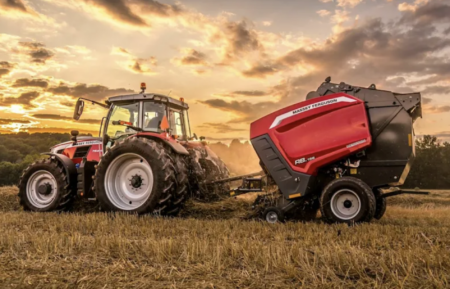The Construction Equipment Association (CEA) of the UK has reported that imports and exports of construction equipment have shown increases on Q1 levels, in both value and tonnage shipped terms.
In value terms, trade was at the highest quarterly levels for both since 2013, when monitoring of trade has been recorded. These record levels can be partly attributed to the higher prices being seen for equipment due to increases in the price of steel and some other products used in machine manufacture. However, the levels of trade measured on a tonnage shipped basis have also been at relatively high levels in recent quarters.
Imports of equipment in Q2 reached £696 million, showing a 10% increase on Q1. This took the level of imports in the first half of the year to £1,330 million, which was 16% higher than the first half of 2021. Imports of tonnage shipped in Q2 were 113 k tonnes, which was a 9% increase on Q1 levels.
However, in the first half of the year, imports reached 216 k tonnes, which was 2% below 2021 levels for the same period. Overall, high levels of imports in the first half of the year are consistent with equipment sales in the UK remaining at very high levels compared with earlier years. The EU share of total imports in the first half of the year was 68%, returning to similar levels seen in 2020. This followed a reduced level of 63% in 2021, which was attributed to a post Brexit effect.
Exports of equipment in Q2 were £984 million, and represented a 10% increase on Q1 levels. This took trade in the first half of the year to £1,879 million, which was 13% higher than 2021 levels during the same period. On a tonnage shipped basis, exports in Q2 were 3% higher than Q1 in the second quarter, and reached 165 k tonnes. For the first half of the year, the comparison is similar, with shipments reaching 326 k tonnes which was 3.5% higher than the same period last year.
While the share of exports to EU markets showed an increase to 47% in Q2, it stands at 45% in the first half of the year and remains at lower levels than 2020. As shown in the table below, EU share of exports had shown a growing trend between 2018 and 2020, but lower levels in the last year and a half could be attributed to a post Brexit effect. An update on total tonnages shipped in 2021 still isn’t available for this report due to problems with some of the tonnage data in Q3, which haven’t been corrected by customs yet. The problem areas are highlighted in red in the table below showing exports by country of destination.
The UK remained a net exporter of construction and earthmoving equipment in the first half of 2022, with exports (£1,879 million) 41% higher than imports (£1,330 million). However, this was a much smaller margin than in 2021 overall, when exports were 64% higher than the level of imports.
The table below provides a summary of the EU share of total imports and exports of equipment for the last four years and the first half of 2022. So far this year, the EU share of trade is showing a different pattern for imports and exports. For imports, the share is increasing and returning to similar levels seen in 2020 levels. In contrast, EU share of exports remains on a downward path and is close to the levels seen in 2018





